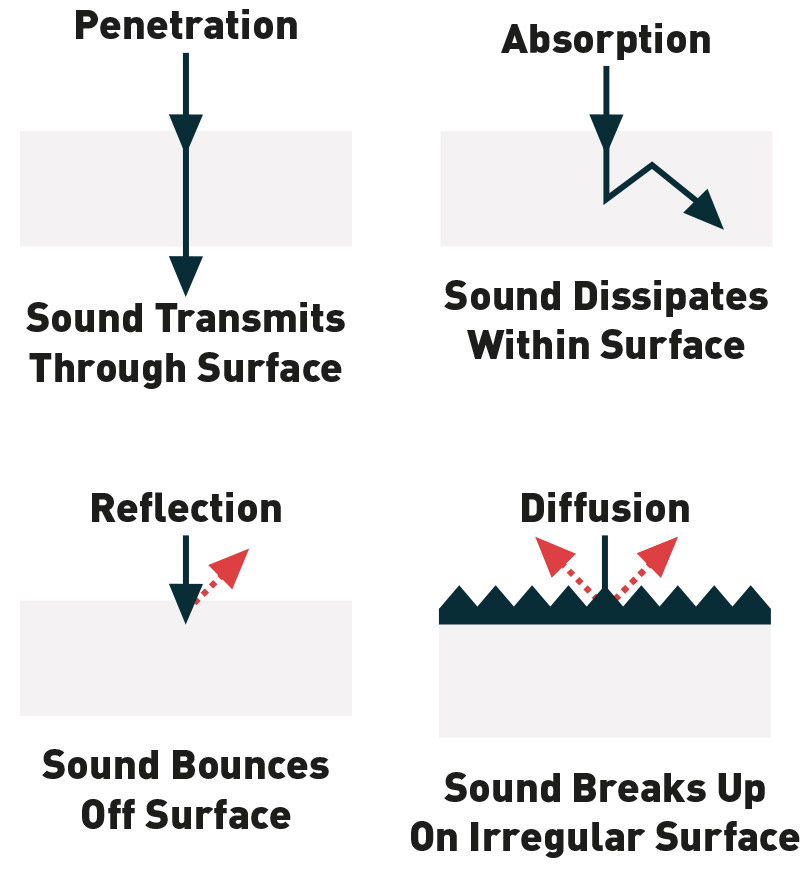
By Luca Masella, M.S.

Soundproofing solutions confine sound to specific locations of a building, prevents sound from spreading to other areas, and keeps undesirable sounds out of spaces. To achieve privacy in spaces such as a conference room, it is important to soundproof.
Sound absorption products, on the other hand, absorb the extra sound waves that bounce around a space resulting in unpleasant acoustics, background noise, and reverberation. They do not block sound from entering into adjacent spaces, but they do considerably improve speech intelligibility and sound quality.

What is NRC?
Usually materials are classified by a number that designates its “absorption coefficient” or NRC (noise reduction coefficient). This number represents the percentage of sound energy that get absorbed into the material over the quantity of energy that bounces back off the material (it is a number from 0 to 1).
It’s possible to come across materials with NRC ratings greater than 1.0, which can be confusing. This does not imply that the material can absorb more sound than it receives. It's a mistake with the calibration of the testing standards.
Usually a high absorption coefficiency relates to porous material with high absorption capacity (fiberglass or polyester). In a relative sense, solid materials are utilized to bounce the sound, and they generally have a low absorption coefficient. Relative materials to compare would be a sponge (NRC close to 1) and a concrete brick (NRC close to 0).
Sound Absorbing
In a closed space, energy may be generated and received in two ways: direct sound from the source to the receiver and reflected sound in the surfaces. This reflected sound increases the reverberation tail by amplifying the sound pressure level provided by the source.
The geometry of the space, its volume, its surface, and the decorative components all have an impact on whether the problem is aggravated or minimized. By definition, a porous sound absorber has numerous small interconnected holes through which sound flows. Friction between air particles and the fiber walls of the medium it is traveling through causes the sound wave to lose energy. A sound wave that can travel into a material can also flow through it.






